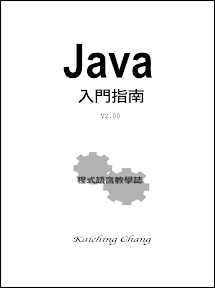
Encrypt04.java
public class Encrypt04 {
// 密碼表字元陣列
private char[] code = new char[26];
// 建構子
public Encrypt04() {
setCode();
}
// setter
public void setCode() {
int a = 0;
int b = 0;
a = (int) (Math.random() * 10);
System.out.printf("%d, ", a);
b = (int) (Math.random() * 10);
System.out.printf("%d, ", b);
int x, y, m, i;
char c = 'a';
for (i = 0; i < 26; i++) {
x = c;
y = x * a + b;
m = y % 26;
code[i] = (char) (m + 97);
c++;
}
}
// getter
public char[] getCode() {
return code;
}
// 編碼的方法
public String toEncode(String s) {
return s;
}
// 解碼的方法
public String toDecode(String s) {
return s;
}
// 測試的 main()
public static void main(String[] args) {
for (int i = 0; i < 16; i++) {
Encrypt04 e = new Encrypt04();
System.out.println(e.getCode());
}
//String s = "There is no spoon";
//System.out.println(s);
//String s1 = e.toEncode(s);
//System.out.println(s1);
//String s2 = e.toDecode(s1);
//System.out.println(s2);
}
}
/* 檔名: Encrypt04.java
作者: Kaiching Chang
時間: September, 2014 */Encrypt05.java
public class Encrypt05 {
// 密碼表字元陣列
private char[] code = new char[26];
// 建構子
public Encrypt05() {
setCode();
}
// setter
public void setCode() {
int a = 0;
int b = 0;
while (a % 2 == 0) {
a = (int) (Math.random() * 10);
b = (int) (Math.random() * 10);
}
System.out.printf("%d, ", a);
System.out.printf("%d, ", b);
int x, y, m, i;
char c = 'a';
for (i = 0; i < 26; i++) {
x = c;
y = x * a + b;
m = y % 26;
code[i] = (char) (m + 97);
c++;
}
}
// getter
public char[] getCode() {
return code;
}
// 編碼的方法
public String toEncode(String s) {
return s;
}
// 解碼的方法
public String toDecode(String s) {
return s;
}
// 測試的 main()
public static void main(String[] args) {
for (int i = 0; i < 16; i++) {
Encrypt05 e = new Encrypt05();
System.out.println(e.getCode());
}
//String s = "There is no spoon";
//System.out.println(s);
//String s1 = e.toEncode(s);
//System.out.println(s1);
//String s2 = e.toDecode(s1);
//System.out.println(s2);
}
}
/* 檔名: Encrypt05.java
作者: Kaiching Chang
時間: September, 2014 */the end

沒有留言:
張貼留言